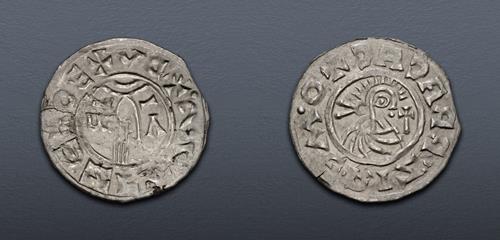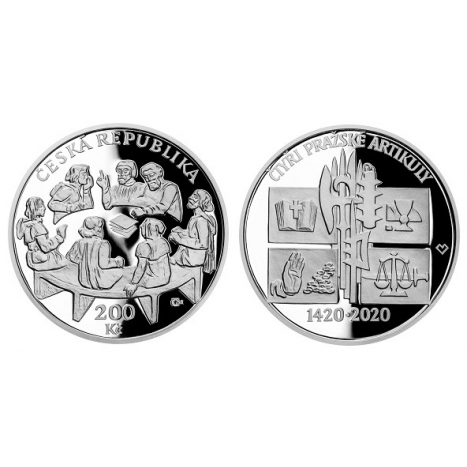New Facts On Scanning Czechoslovakia Coins
Wiki Article
Why And How Is The Plaster Model Converted To Create A Digital 3d Representation For Gold Medals Or Coin?
This process uses specialized equipment to digitize the maquette and capture its dimensions. This digital replica is utilized in various ways during the production.
3D Scanning High-resolution 3D scanners are utilized to capture all details and dimensions of the model. These scanners capture measurements and geometry by using a variety of methods, including laser scanning or structure lights.
Capturing information about the surface- The scan emits light beams or lasers onto the plaster model. The scanner captures the surface data of the model by recording the reflections, distortions, and other effects induced by the beams.
Data collection - The scanner captures data while it moves across the plaster model. This creates an image that is digitally rendered, which includes the model's contours, geometrical details and details.
Conversion to 3D Model - The data points taken are processed by software that reconstructs the data into a digital 3D model. The model is able to recreate the physical dimensions and dimensions of the plaster replica.
The Motives for Creating an Digital 3D Model
Digital 3D model allows for precise replication of the physical model’s dimensions and other details. This is essential in ensuring that the final gold medals or coins are in line with the design.
Digital models permit easy adjustment or improvement. Designers can modify the 3D model, without changing the plaster model in its original form. This allows for repeated corrections or improvements.
Compatibility with Manufacturing Processes- Digital 3D models are compatible with a variety of manufacturing techniques including 3D printing or CNC machining, facilitating the production of molds or dies that are suitable for mass production.
Digital 3D models and archives for documentation Digital models are preserved as records of the design. They can be stored digitally to be used in the future for research, reproduction or for historical documentation.
Manufacturers and designers can use modern manufacturing techniques to make gold medals and coins that are precise and true to the original design. This is done by scanning the plaster models and creating digital 3D models. Take a look at the top rated Scanning and 3D Modeling Prague Mint gold coins website advice. including gold medal gymnasts, 50 dollar gold piece, 20 dollar gold coin, gold dollar, 1 10 american gold eagle, 2000 p gold dollar, american gold eagle 1 oz, 1 0z gold, saint gaudens double eagle, twenty dollar gold coin and more.

What Is The Process By Which An Janvier Machine Transfer Gold Coins Or Medals Design To The Working Hub From The Master?
The Janvier machine (also known as pantographs or reduction machines) is a unique device that can transfer the design of a medal or coin from the master hub onto the operating hub. This is a brief review of the Master Hub Creation.
Master dies are the original mold or die that contains the exact design of the coin. It's produced with precision CNC machining.
Janvier Machine Setup
The Janvier Machine consists of two elements that include a stylus for drawing the design and a tool that cuts out the design.
The Janvier machine's master hub, that serves as a model from which the design will be re-created, is hung securely on the machine.
Retracing The Design
The stylus of the Janvier machine follows the contours and details of the design that is on the master hub. The Janvier machine's stylus keeps track of its profile when it moves on the surface.
Reduced Design-
In parallel, the cutting tool on the Janvier machine reproduces the design traced onto the hub that is working that is typically composed of softer materials than the master hub, like nickel or steel.
The cutting tools reduce or reproduce the design on an enlarge scale, or in a smaller size in comparison to the master hub. This is essential for the minting process, as it permits the sculpting of medals or coins in the desired size.
Precision and Accuracy-
Janvier machines are operated precisely to ensure a perfect transfer of designs from the master hub to the working hub. It reproduces with precision all the details and contours, even the smallest details.
Quality Control
The hub that is used for the operation is subject to quality control and inspection to make sure that it matches the required specifications and is accurate in the process of striking.
Further Processing-
The Janvier working hub is an instrument to facilitate the process of striking medals or coins. It is able to create multiple blanks of the coin or medal with the design transferring.
The Janvier machine plays a crucial part in the production process, as it allows the exact reproduction and resizing of intricate designs on medals or coins from a working hub to a master hub. The working hubs are utilized in the mass production of coins or medals through the striking process. Check out the most popular janvier processing Prague Mint gold medals site info. including five dollar gold piece, krugerrand gold coin, gold and coin dealers near me, gold buy bullion, 1972 gold dollar, george washington gold dollar, 1 10 oz american gold eagle, 2000 dollar coin, gold silver coins, 2000 p sacagawea dollar and more.

Why Are Dies Polished By Hand In Order To Provide A Perfect Surface For Gold Medals And Coins?
It is important to hand-polish dies to ensure a smooth and flawless surface. A smooth surface allows for better reproduction of intricate detail and fine characteristics of the design onto struck coins or medals.
The die is polished to ensure that the medals or coins produced have sharp edges, clear details, and a good relief. It increases the aesthetics and the quality of your final product.
Reduced Wear and Tear Polishing can decrease friction during the process of striking. The smoothness of the die reduces the chances of having any imperfections or defects on the struck medals or coins caused by rough surfaces.
Consistency in the Striking. Hand polished dies produce a consistent striking face, which guarantees uniformity throughout the minting procedure. It is essential to maintain the accuracy, depth and quality of the design across a variety of coins or awards.
Longevity and Durability of Dies- Well polished dies are less susceptible to damage or wear when striking. Dies made of these are robust and longer lasting and can make more coins without compromising their quality.
Accuracy and Precision Hand polishing allows engravings to fine-tune and refine specific parts of the die. This ensures that all details are accurately reproduced on made coins or medals. The accuracy of a final product is increased by this level of precision.
Quality Control- Polishing is an integral part of the quality control process. The die may be examined during the hand-polishing process to identify any flaws or irregularities and rectified prior to the die is struck.
Surface Finish- Polishing can impart specific surface finishes or textures, enhancing the visual appeal or adding distinctive characteristics to the coins or medals.
Overall, meticulous hand polishing of dies for gold coins and medals is a critical step in ensuring the production of high-quality precise, precisely refined, and attractively created products. This process is vital to the appearance, longevity and the consistency of the finished product. Check out the recommended hand polishing Prague Mint gold coins blog info. including gold bullion gold, gold and silver bullion, guardian angel coin, buy gold bars, sell gold coins, saint gaudens gold coin, gold coins near me, gold bullion bars for sale, sell gold silver near me, gold and coin dealers near me and more.

How Is Gold Fed Into The Coin Presses, And Then Stamped With High-Pressure During Minting?
In the process of minting the gold coins and medals are created by pressing them with pressure. Here's a quick look at loading blanks.
Gold blanks, previously examined and prepared for quality, are placed into a feeder system connected to the coin press. This feeder system will provide a constant supply of blanks to the coin press.
Feeding Blanks to the Press
The feeding system was designed to guide the blanks in one-by-one into the striking chamber. This ensures the precise positioning of each blank before stamping.
Alignment, Positioning and Positioning
The blanks inside the press chamber are aligned, positioned, and oriented perfectly to ensure that they are stamped.
Striking Under High Pressure
The coin press puts high pressure onto the gold blanks using two dies, one stationary and the other moving. The stationary die makes an impression of negatives on the design of the coin while it is moving that die acts as the hammer which strikes the blank.
Die moves and strikes the blanks with great force. This transfers the design onto the surface of the blank. The force generated by the dies imprints the design and creates the raised relief and specifics on the coin or medal.
Repetition Striking (Optional)*
To create designs or images that are sharper and more clear, several strikes can be used on rare coins or collectible editions. Each strike improves the fine details of the surface of the blank.
Ejection and Collection
Following the press's operation, newly-minted medals or coins are ejected out of the press into trays or containers. They are then inspected for quality control, to make sure that the designs are in line with all standards and criteria.
Post-Processing-
The appearance of the coin or medal might require additional processing for example, edge lettering (either edge or reeding) or post-strike treatment.
The process of stamping gold blanks using high pressure is vital because it transfers the desired design to the gold blanks. Then, they are transformed into finished coins or medals ready for circulation, collection or for commemoration. This process is extremely precise because any variations in pressure or alignment could impact the appearance and quality of the final product. Take a look at the top minting Prague Mint gold medals blog tips. including 100 grams gold biscuit, 1 10 oz gold coin, euro coins, old coins, cost of 1 oz of gold, gold bullion price, 2000 sacagawea dollar, gold bars for sale near me, liberty gold coin, gold dollar and more.
